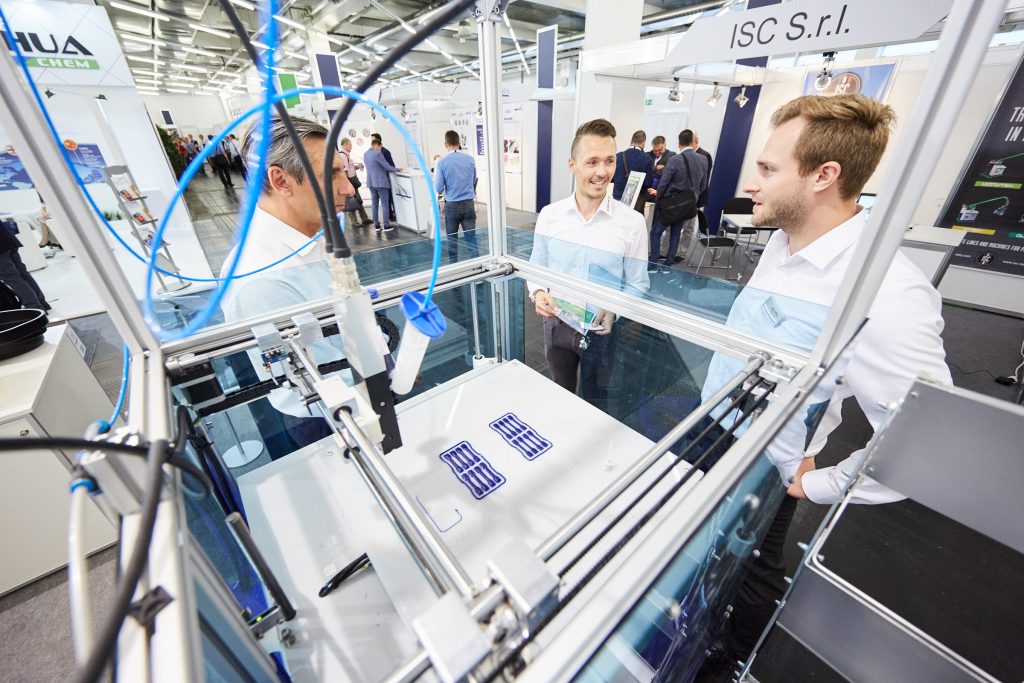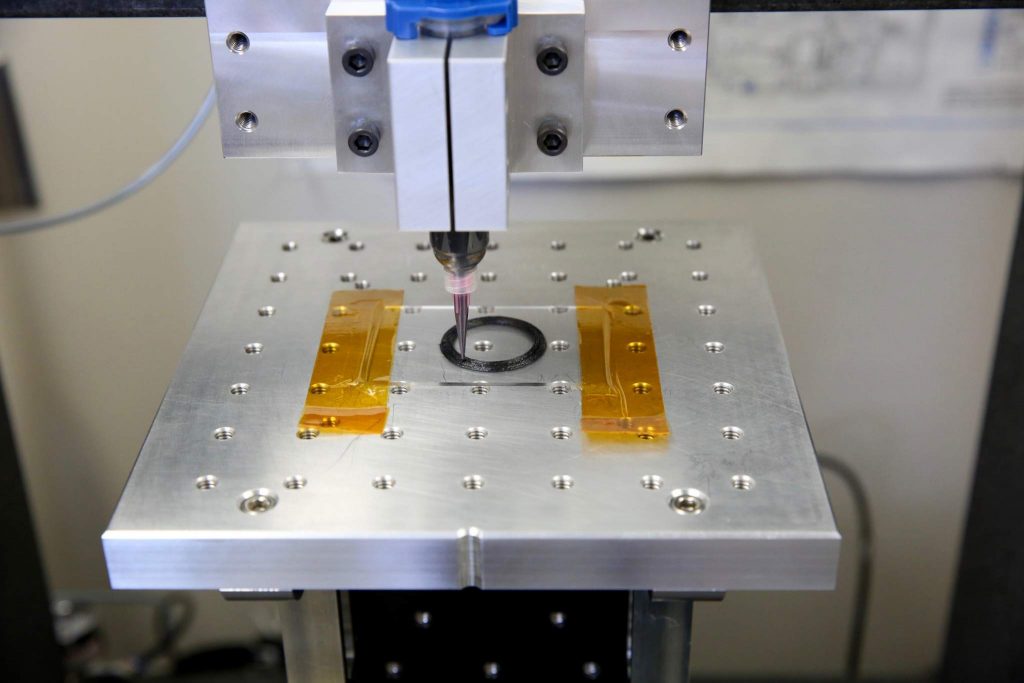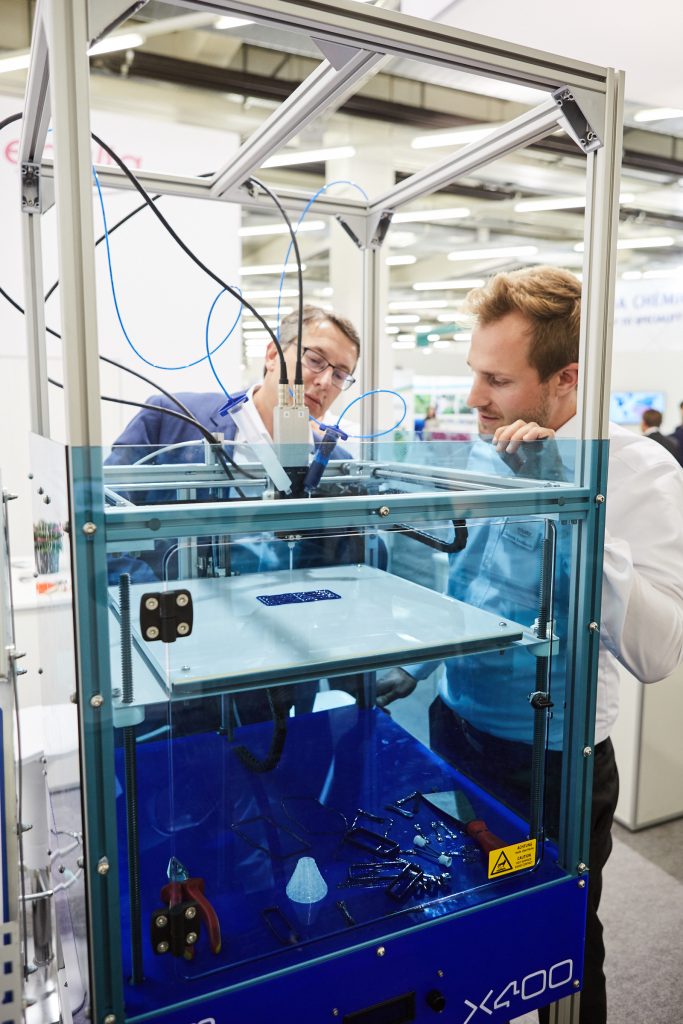German RepRap, manufacturers of FFF 3D printers and ebalta Kunststoff GmbH, a materials company, have announced a new polyurethane (PU) based material for 3D printing.
The manufacturer says their PU plastic material has isotropic mechanical properties due to chemical crosslinking. This could open the door to applications where anisotropic 3D prints falter. Furthermore the PU material can be processed in a liquid state, without the need to melt.
Introduced at the PSE Europe 2017 event in Munich, ebalta Kunststoff demonstrated how the material can be 3D printed on German RepRap’s liquid additive manufacturing (LAM) system.

3D printing with silicone
LAM was first unveiled at last year’s Formext event in Frankfurt. German RepRap showed how liquid materials, for example silicone, can be processed in LAM 3D printers. The process should not be confused with Laser Additive Manufacturing, a term used by some to refer to the metal 3D printing process more commonly included in the power bed fusion family. The group includes technologies such as Direct metal laser sintering (DMLS) and Selective laser melting (SLM).
Discussion of PU often ventures in talking about silicones. This is because both are elastomeric materials, and can be used for similar applications – for example as a sealant. However, while polyurethane is categorized as an organic material, Silicone is inorganic.
The Formnext demonstration showed how the FDM printer when equipped with a syringe could deposit layers of silicone and use thermal energy to promote crosslinking. A number of enterprises are also working on 3D printing with silicone. In 2015, we reported on how WACKER SILICONES and Enders Ingenieure GmbH were developing a UV printing process that deposits transparent silicone in drop form before curing it with UV light.
Lawrence Livermore National Laboratory has recently published research showing how a combination of direct ink writing with shape memory polymers can create silicone structures.

3D printing with polyurethanes
German RepRap explains that, “the customizable properties of the [TU] material offer the necessary flexibility to fulfill a broad range of requirements.”
“The PU material was developed with the goal to create a wide range of properties, from soft to hard. The manufacturing process produces a comparable structure to that yielded from the FFF process. However, the PU material enables the printing of highly complex parts, which may be difficult or impossible with existing injection molding technology. Most importantly, the mechanical properties are virtually identical to those of an injection-molded part.”
These mechanical properties open up a range of new applications. For example prototyping models in a functional material with the required specific strength or in a flame retardant material.
PU materials are most commonly found in a foam state and used as insulation or in mattresses. Paint and adhesive systems are other frequent uses.
German RepRap says, “polyurethanes are suitable for special applications, such as those requiring high resistance to wear. This makes them suitable for applications in virtually all industries, especially automotive, aeronautical, and construction.”
3D printing with PU materials at the moment can be done using thermoplastic polyurethane (TPU). TPU is used for a range of 3D printing applications including biomedical, functional devices and even in fashion.

German RepRap also say their process – which works with the liquid form of TU – is more energy efficient, due the fact the material can be 3D printed at room temperature.
Another aspect of the lower temperature is that thermal warping or detachment from the print bed may be less likely.
Stay up-to-date with the latest 3D printing research and news by subscribing to our newsletter and following us on twitter and Facebook.
Featured image shows the German RepRap 3D printer and ebalta Kunststoff at PSE Europe. Copyright © Mack Brooks Exhibitions.



